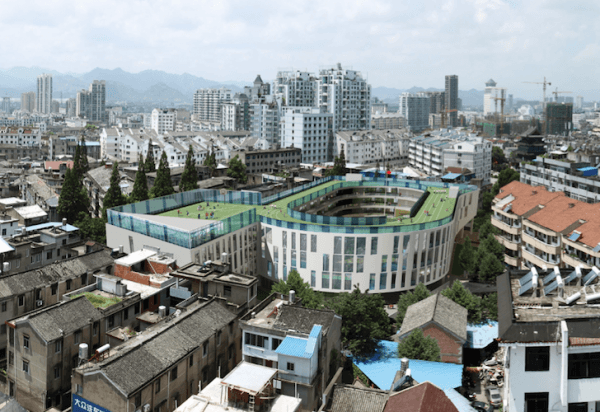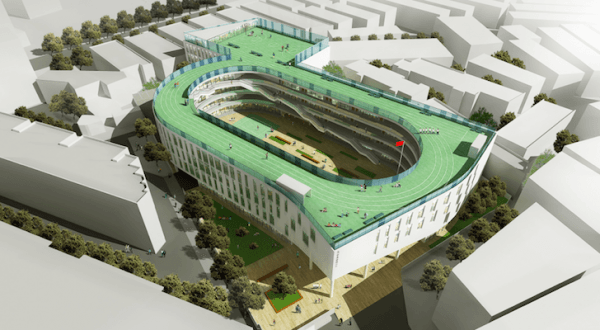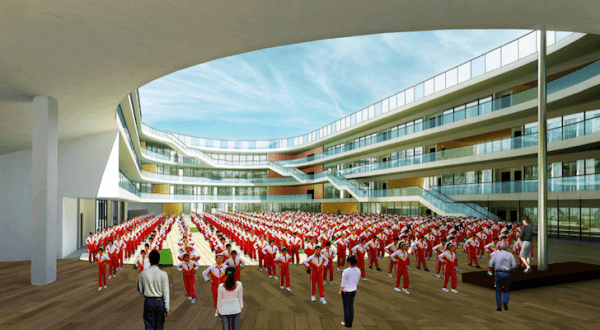For the typical, horizontally designed school campus looking to reduce its carbon footprint, finding room somewhere on the vast rooftop or on the playgrounds for an educational garden is usually not too difficult. But what about those already established schools in densely populated areas where there’s no room for a playground and nowhere else to build but vertically?
In China’s Tiantai County, the new ChiCheng Second Primary School faced such a challenge on the tightly packed urban site that was chosen. While searching for room for a playground and for ways to make the project more sustainable, the designers at LYCS Architecture have proposed a combined playground, running track and green roof in one elegant oval and let that shape dictate the layout of the rest of the school structures.

With a 200-meter-circumference, grass-covered running track — plus and adjacent square playing field — kids will have a dynamic and inspiring place to play and exercise, with a nice view of the surrounding city from four floors up. At the same time, their school saves on energy costs from the insulating properties of the green roof. Also, the living roof helps absorbs stormwater runoff and reduced the heat-island effect.

By basing the rest of the 109,600-square-foot building on the shape of the track, the school will have a central, open-air courtyard that will protect the children from the city traffic around the campus and provides room for students to gather for various outdoor classes, activities and assemblies. Large windows around the inner and outer exterior walls also help to draw in as much natural light as possible to reduce electricity costs.

Having the exercise area on the roof also freed up an extra 32,000 square feet of space on the grounds, which allowed LYCS to fit all of the required classroom and events space into a four-story structure, rather than the originally planned five stories. This elevation more closely matches the average height of the surrounding buildings. The extra room also enabled the designers to include small pockets of breathing room space between the outer envelope and the rest of the urban Tiantai environment.